Mathematics can be a worrisome subject for some students, but with the use of picture books during shared reading, it doesn’t have to be. Children’s literature is a spring board to capture students’ interest in math. Integrating mathematics and literacy can decrease math phobia because it’s no longer just about numbers and shapes; students can begin to apply what they understood and learned from the story to the math lesson.
According to Marston (2010), there are three types of math picture books:
1. Explicit – Books that are written for the purpose of teaching and learning math.
• Math Fables (Tang, 2004)
• Equal Shmequal (Kroll, 2005)
• The Greedy Triangle (Burns, 2008)
2. Perceived – Books that teachers identify as containing math concepts, therefore, easily lending themselves to math teaching and learning.
• Caps for Sale (Slobodkina, 1987)
• The Doorbell Rang (Hutchins, 1989)
• The Very Hungry Caterpillar (Carle, 1994)
3. Embedded – Books that encompass math concepts, but their main purpose is to entertain readers rather than actually teach math.
• Alexander, Who Used to Be Rich Last Sunday (Viorst, 1987)
• One Duck Stuck (Root, 1998)
• One Leaf Rides the Wind (Mannis, 2002)
As educators, we know that students learn best when lessons are presented to them in a meaningful way. Students have an easier time grasping concepts when they can make connections. There are many reasons to use literature in teaching mathematics, but let’s focus on how shared reading, using picture books, achieves all five mathematics process standards for students:

Figure 1. Mathematics process standards for students as recognized by the National Council of Teachers of Mathematics (NCTM)
1. Picture books connect math to the real world. When students are exposed to stories involving math concepts, they are more likely to see how math is present in their everyday life. This expands their experience and improves their performance in the classroom because math becomes more interesting since a connection can be made between the story and the world around them.
2. Picture books supply concrete, pictorial, or symbolic representations of math. When picture books containing numbers, graphs, tables, or other math symbols are used as an introduction to a new lesson, they provide students background knowledge and context so they have a basis for their thinking. As a result, students are better able to retain information and establish meaning.
3. Picture books allow math talk. When students are engaged in a story, they become equipped to discuss math as it relates to the books’ illustrations and storylines. Students are able to express their understanding and thinking in words along with numbers.
4. Picture books encourage problem-solving. Storylines have the ability to grab students’ interest that may stimulate them to ask their own questions and search for answers. As a story progresses, students are able to think through the plot and develop or consider different strategies in solving a problem based on evidence and clues found in a story.
5. Picture books help with reasoning and thinking. When we connect math and literacy, students are able to build language skills and explain reasoning. In addition, students begin to note patterns and similarities between mathematical situations and real life, which help them discover proof that leads to an answer along with other discoveries as well.
Source: Attard, C. 2017, ‘Teaching mathematics through picture books’, Scan, 36(4), pp. 6-10
Click here to enter for a chance to win one of the books pictured below to use during your next shared reading. Suggested activities included.

To learn more about Exploring Math through Literature, visit National Council of Teachers of Mathematics.
For a list of math-themed books for children categorized by skills, visit The Best Children’s Books.
For more ideas on incorporating math across the school day (and more), visit Teaching Math to Young Children by the What Works Clearinghouse, Institute for Education Sciences, U.S. Department of Education.
More questions? VKRP provides support via the online chat feature when you are in the system, via email vkrp@virginia.edu, and via toll free 866-301-8278 ext. 1

